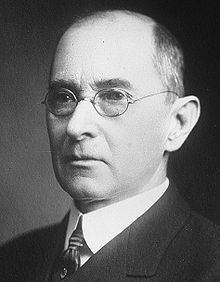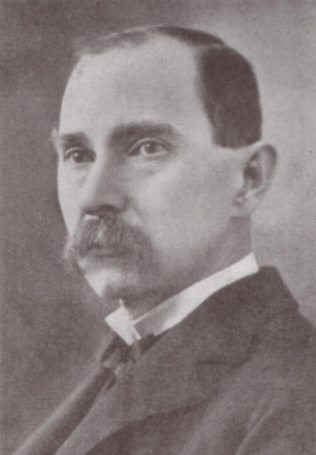Name John Lloyd | Siblings Curtis Gates Lloyd | |
 | ||
Died April 9, 1936, California, United States People also search for Harvey Wickes Felter, Curtis Gates Lloyd, Finley Ellingwood, John King, James W. McLaughlin Books Etidorhpa, King's American Dispensatory, Stringtown On The Pike: A T, Etidorhpa - Or - The End of Ea, American Materia Medica - T | ||
John uri lloyd eclectic pharmacist
John Uri Lloyd (19 April 1849 – 9 April 1936) was an American pharmacist and leader of the eclectic medicine movement who was influential to the development of pharmacognosy, ethnobotany, economic botany, and herbalism.
Contents
- John uri lloyd eclectic pharmacist
- John Uri Lloyd American Pharmacist
- Life and career
- Writings
- Legacy and honors
- References

He also wrote novels set in northern Kentucky. His most popular novel was the science fiction or allegorical Etidorhpa, or, the end of the earth: the strange history of a mysterious being and the account of a remarkable journey (1895). First distributed privately, it was later illustrated and printed in eighteen editions. Translated into seven languages, it was widely read in Europe as well as the United States.
John Uri Lloyd: American Pharmacist
Life and career
John Uri Lloyd was born in upstate New York to teachers Sophia Webster and Nelson Marvin Lloyd. His family relocated to Florence and Petersburg in northern Kentucky, near Cincinnati, Ohio in 1853. Lloyd took an apprenticeship with the chemist William J.M. Gordon when he was 14 years old and later apprenticed with George Eger.
His younger brothers Nelson Ashley Lloyd (1851–1926) and Curtis Gates Lloyd (1859–1926) also became chemists. During 1886 the brothers bought the Merrell and Thorpe Company, renaming it as Lloyd Brothers, Pharmacists, Inc. John Lloyd's innovations include a "cold still" for plant extractions and the first buffered alkaloid (made with hydrous aluminium silicate), called alcresta.
During 1919 Lloyd and his two brothers established trusts to fund the Lloyd Library and Museum. Today it is considered by many to house the finest collections in the world devoted to eclectic medicine, medical botany and pharmacy. During the 19th and early 20th century, the eclectic medicine movement was popular, which incorporated the use of medical botany. It founded associated medical schools, including the Eclectic Medical Institute, first located in Worthington in 1833, which moved to Cincinnati, where it had students from 1845 to 1939.
After Lloyd's death in 1936, S.B. Penick bought the Lloyd Brothers firm in 1938. In 1960 Hoechst AG, the German pharmaceutical manufacturer, purchased the operations. In 2013 the American company Eli Lilly and Company bought Hoechst AG.
Writings
Lloyd combined his interests by writing a series of local description novels about the northern Kentucky area. His most popular and influential work was the novel Etidorhpa (1895), a scientific allegory that some consider a work of science fiction. It was part of what are called the genre of "hollow earth" novels, based on a journey to the interior of the earth and another world. He first distributed the book privately. When it was printed commercially, illustrations by J. Augustus Knapp were added. It ran to eighteen editions and was translated into seven languages.
